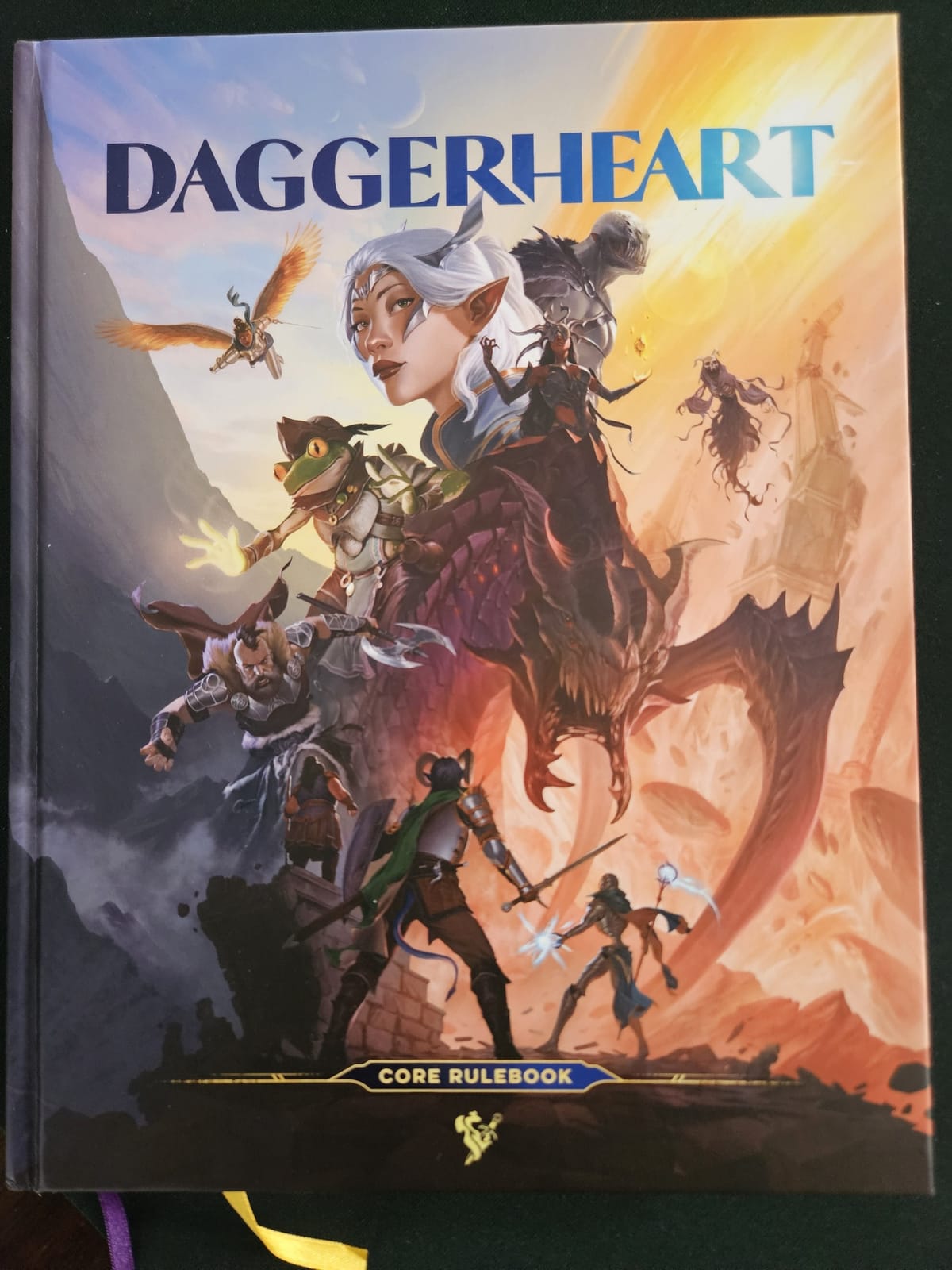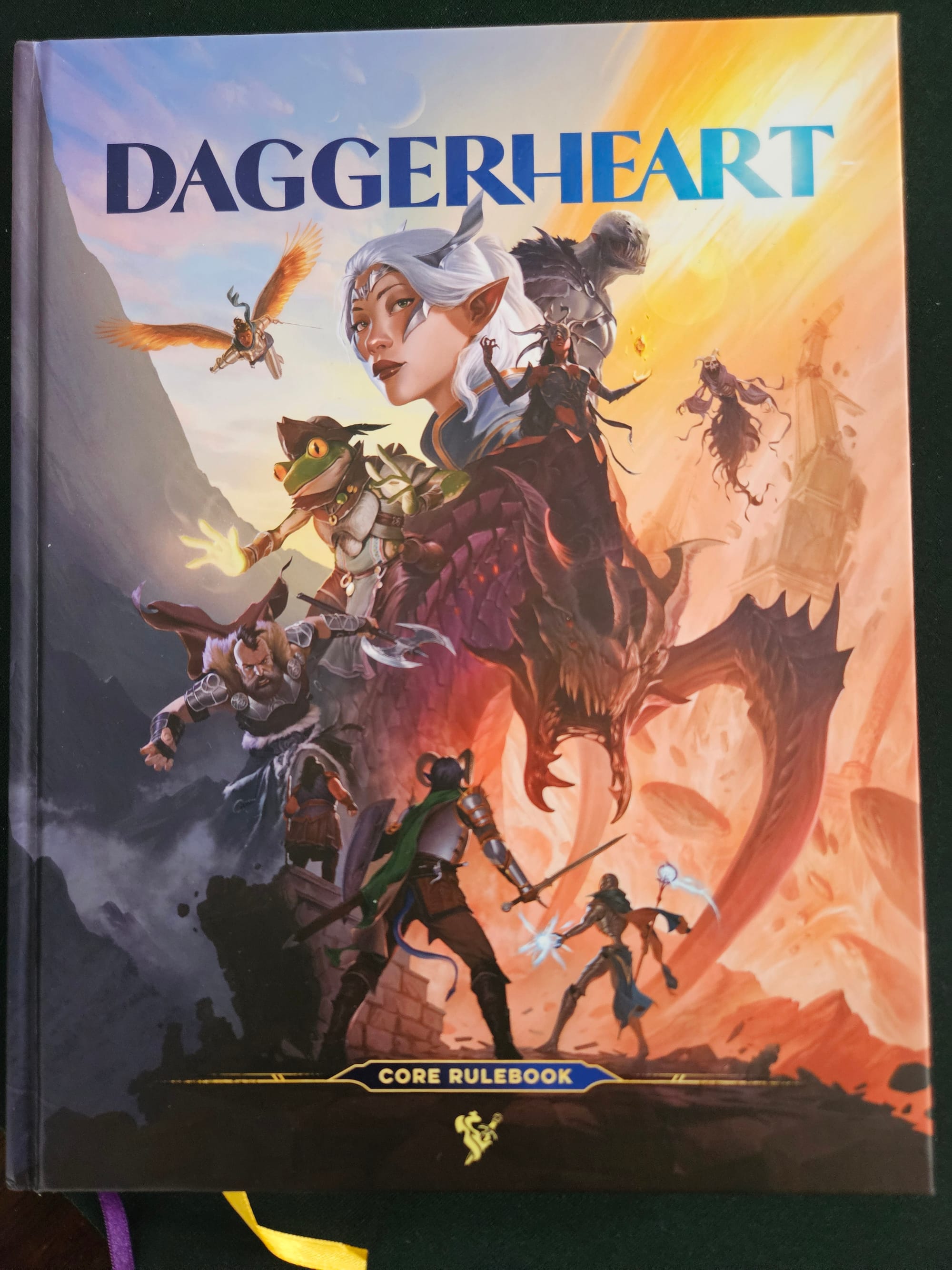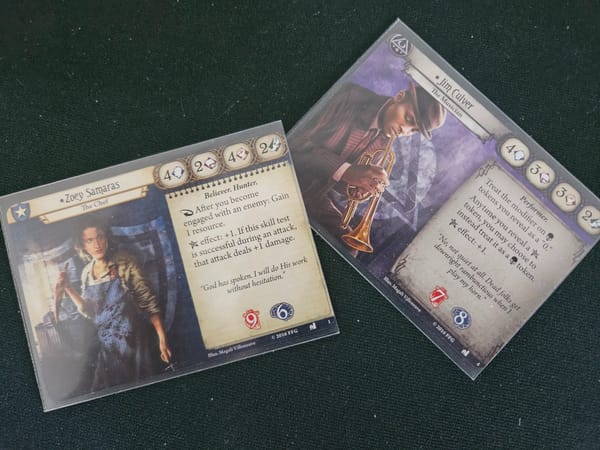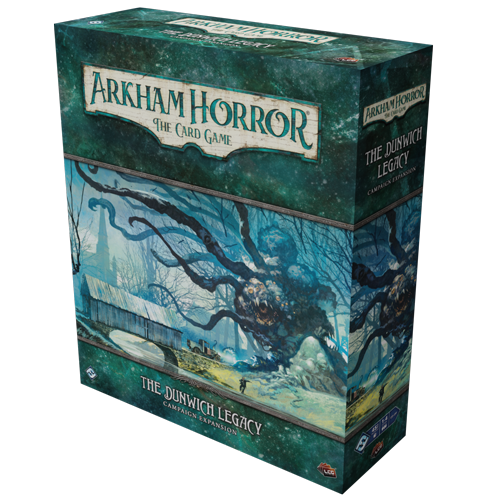Book review: Daggerheart - Part 2
Second part of my Daggerheart book review. Let's talk about classes, ancestries and GM stuff.

Many aspects of Daggerheart have been reviewed in the first part of this review; go check it out if you haven't yet.

Classes and ancestries
A quick word on the classes and ancestries selection. There are 9 classes, each with two subclasses; nothing groundbreaking, you'll find your expected tropes about fighters, defenders, rogues, wizards, and such. Each has access to two of the nine ability domains. I think there's a good variety without being overwhelming, especially since you get only two core features at level 1. Other official classes are already in the works, and I have no doubt the community will come up with interesting ideas. The number of abilities available might seem limited; each character has a loadout of a maximum of five to work with.
In the theory, this loadout system should simplify gameplay by reducing options available to each player. It should also speed up the game and help newer players. I'm very curious to experience it before judging as this could feel limiting or even underpowered to many players, especially if you're coming from DnD and playing a mage with three dozens of spells in his spellbook. I'm also the type of person that likes to use his abilities creatively, something I can't really judge at the moment.
There are 18 ancestries to choose from or mix if you want to get creative. They each provide two abilities that should be easy to manage. You have your expected dwarves, elves and halflings, but also interesting anthropomorphic choices like turtle, fungi or goat humanoids. Players should probably see their ancestry as a narrative tool rather than a power source.
GM sections
The GM section of the book provides useful guidelines about fairness, best practices, and pitfalls to avoid. These few pages are probably not enough for a rookie GM, but hopefully they can be referenced back later when some experience has been acquired. A rookie GM will be more interested in the roll difficulty tables and examples of Hope/Fear consequences. Well, I was in the latter, and I'm no rookie.
Surprisingly, character death is covered in the GM section. I guess it's to keep it a surprise for the players, but they will learn quickly how cool this system could be. When your character dies, you can perform one of three death moves: roll over (not dead, but you reduce your max Hope), risk it with a die roll (if you roll with Hope, you regen a few HP), or perform a blaze of glory (you die, but you get to perform one final act of awesomeness, greatly altering the narrative). Not gonna lie, I predict many of my characters will go down with a blaze of glory! 😎
The book rolls out another interesting idea within the adversary section. It proposes a way to formalize environments with stat blocks, much like your traditional monster. That's a neat idea if only it could remind the GMs to think about how the environment or setting affects the players, something I know I forget sometimes. Not just your traditional lava chasm is covered, but also social encounters like a king's court.
I like how simple the adversary blocks are. A handful of stats, an average of two special abilities—all of this fit neatly in a small box, not larger than an index card. I don't think we need more than that. I absolutely dislike how voluminous the monster stat blocks have become in DnD or Pathfinder. That's too much information, and it distracts me from the action.
Finally, the book proposes various campaign settings. They are usually described only with a few pages, but I think it's enough to inspire GMs. They include some campaign hooks, but no detailed adventure is provided. The Beast Feast, a setting about a peaceful town living on top of a series of caves where monsters were trapped a long time ago, really got my imagination going, especially with its intriguing focus on it being a cooking adventure.
Final thoughts
I think Daggerheart is a quality product. It should please the fans of narrative RPGs, it offers flexibility and regularly reminds players this is their game, at the their table, adapting any rule is absolutely fine! Some systems will take time to get used to, like how the damage is handled, but I don't think the task is daunting. After reviewing the book, I'm interested in running a game to try the system and make it my own. I guess that's the biggest compliment I can give it!



